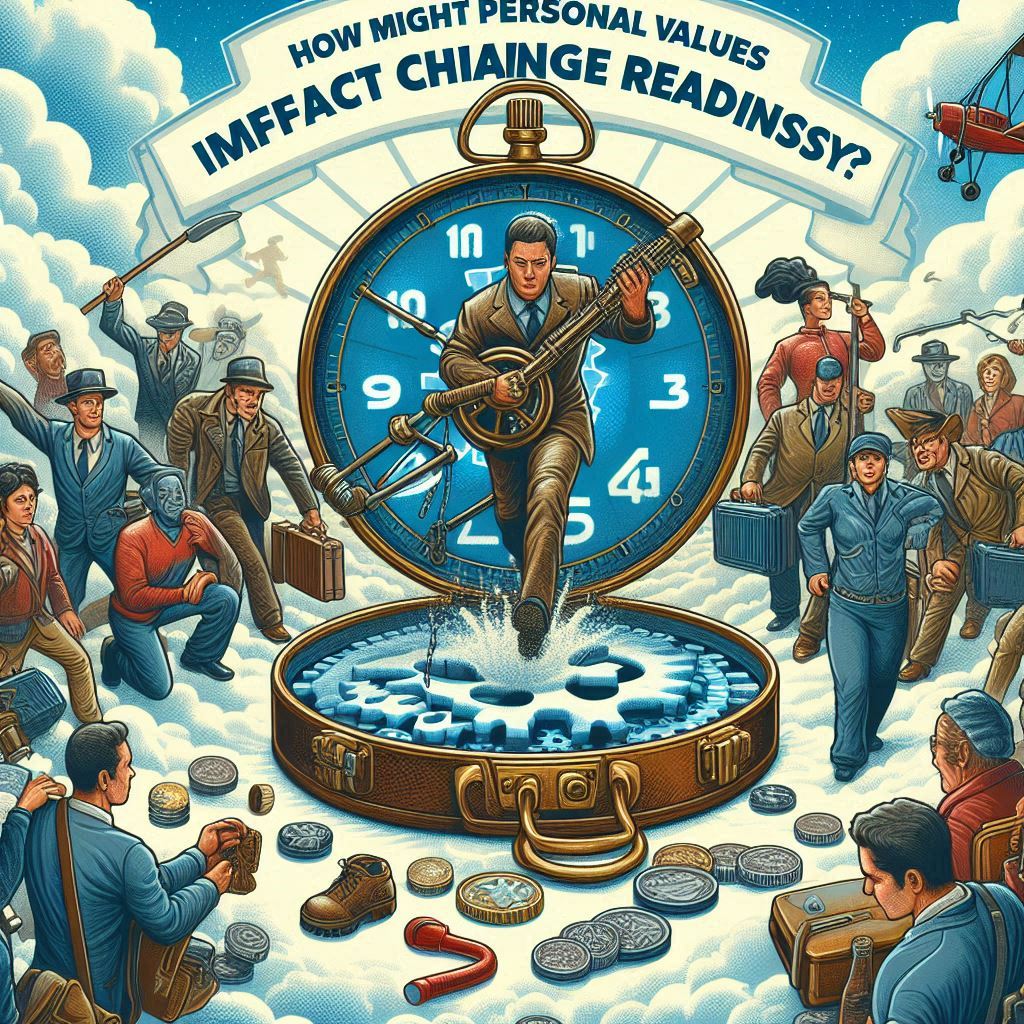Mastering Values, Leadership, and
Change» (ISBN-13: 978-1405133562)

A special thank you to Nils Bunde [1] for his thoughtful questions, which inspired this exploration of how personal values shape an individual's readiness for change. Change readiness is not merely about adopting new behaviors — it reflects deeper psychological processes rooted in personal values. Values act as guiding principles that determine how people perceive, engage with, and respond to changes in their personal and professional lives. This article draws on insights from Spiral Dynamics to unpack the connection between values and change readiness.
According to Spiral Dynamics, individuals exhibit unique combinations of values that correspond to different developmental stages, or “vMEMEs,” such as ORANGE (focused on achievement) or GREEN (focused on consensus and harmony). Understanding these value profiles helps explain why people respond differently to change. Some may thrive in competitive environments, while others seek harmony and shared goals. Recognizing these nuances provides valuable insight into individual motivations during change.
People who operate in open-thinking states — flexible and willing to explore new perspectives — are more prepared to embrace change. This mindset allows individuals to adjust their behavior when necessary, making them more resilient in dynamic environments. On the other hand, those locked into rigid thinking patterns may struggle with change, seeing it as disruptive rather than an opportunity.
When changes align with personal values, individuals experience less resistance. For example, someone with BLUE values (focused on order and structure) may embrace change if it brings clarity and stability. Conversely, change that contradicts core values can trigger resistance. A key element in fostering change readiness is identifying how the new direction aligns with existing values.
Higher levels of development, such as YELLOW (flexible, systemic thinking) and TURQUOISE (holistic, global thinking), are characterized by openness to complexity. Individuals operating from these value stages are more likely to view change as a natural evolution, not a threat. This openness fosters a constructive approach to change, enabling individuals to navigate uncertainty and adapt to evolving conditions effectively.
Resistance to change often arises when new conditions clash with existing values. For example, someone with GREEN values (focused on consensus and harmony) might resist changes that promote competition. However, when individuals become aware of these underlying value conflicts, they can better manage their reactions, reducing resistance and promoting smoother transitions.
Personal values drive the motivation behind change. Those with ORANGE values may be motivated by achievement and personal growth. In contrast, individuals with TURQUOISE values are more likely to pursue change that serves collective well-being. Understanding what motivates individuals at different value stages can enhance their commitment to change initiatives, making the process more meaningful.
Life conditions — such as economic stability or personal crises — can trigger value shifts, influencing change readiness. For instance, during times of crisis, individuals may adopt BEIGE survival values, prioritizing safety over transformation. Recognizing these value shifts allows individuals to anticipate their reactions to change and adjust their approach as conditions evolve.
Gaining insight into personal values helps individuals make intentional decisions about change. Self-awareness allows people to align their actions with deeper motivations, facilitating personal and professional growth. This process transforms change from a disruptive event into a deliberate step toward personal development.
SaaS SDTEST® offers valuable insights into personal value systems, providing individuals with a mirror to reflect on their behavior and motivations. By understanding their vMEME profiles, users can identify areas where they are open to change and those where they may encounter resistance. This self-knowledge becomes a powerful catalyst for sustainable transformation.
